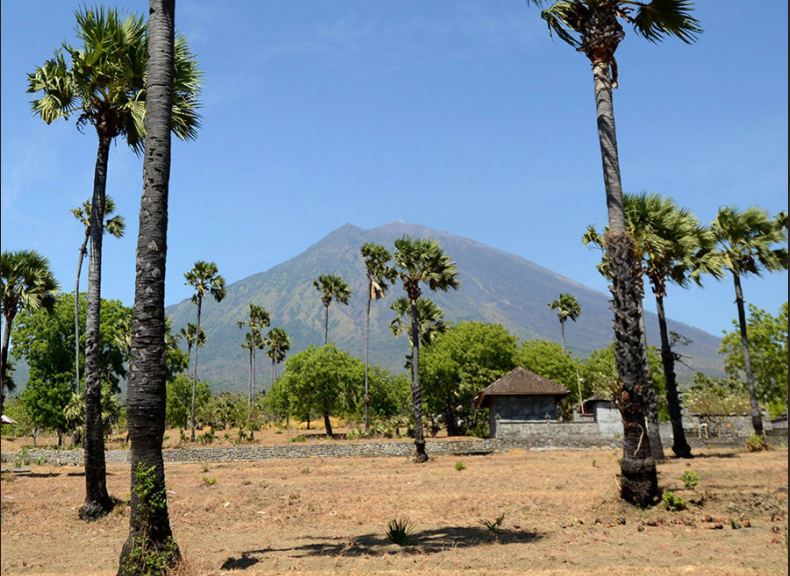12:45 PM | *Bali, Indonesia volcano showing signs of a major eruption*
Paul Dorian
A view of Mount Agung volcano from Karangasem, Bali, Indonesia on October 6, 2017 (courtesy AFP/Getty Images)
Overview
Bali is an Indonesian island known for its volcanic mountains, beaches and rice paddies. For the last month or so, Bali’s largest volcano Mount Agung has been rocked by hundreds of earthquakes and in recent days that number has spiked to nearly 1,000 per day. In addition, white steam is now billowing out of the Bali volcano and this in combination with the increasing number of earthquakes suggests that a major eruption could be imminent. As a precaution, some 180,000 people have been evacuated from the surrounding area during the past few weeks. If there is a major eruption in this part of the world, it could have a significant impact on global temperatures for a few years.
Map of Indonesia with arrows pointing to the locations of Mount Sinabung (left) and Mount Agung (right)
Discussion
Mount Agung last erupted in 1963 sending a plume of ash some 15 miles into the atmosphere. Since Mount Agung is located near the equator where the sun's rays are the strongest, a major eruption with ash flying up into the stratosphere could have short-term climatic impacts of a few years. In fact, the last major eruption of Agung led to a global cooling of 0.5°C during the following few years. Similarly, the eruption of Pinatubo in the Philippines in 1991 led to a global cooling of around 1.0°C following that event.
HadCRUT3 global monthly temperatures illustrating the effect of the June 1991 volcanic eruption of Mount Pinatubo in the Philippines. The temperature effect apparently lasted to the end of 1992, as indicated by the shaded area. (courtesy climate4you.com)
Meanwhile, at the same time Mount Agung is increasingly active on the island of Bali, Mount Sinabung is now spewing a cloud of thick smoke some 185 miles away. In fact, there is now a 4 mile exclusion zone around this second Indonesian volcano and the threat level there is at its maximum. Mount Sinabung had been inactive for four centuries when it began spewing ash in 2010. The volcano has been active ever since and in recent months, there have been multiple minor eruptions sending ash up to about one mile into the atmosphere.
Yesterday's view of Mount Sinabung in Sumatra, Indonesia
Meteorologist Paul Dorian
Vencore, Inc.
vencoreweather.com




